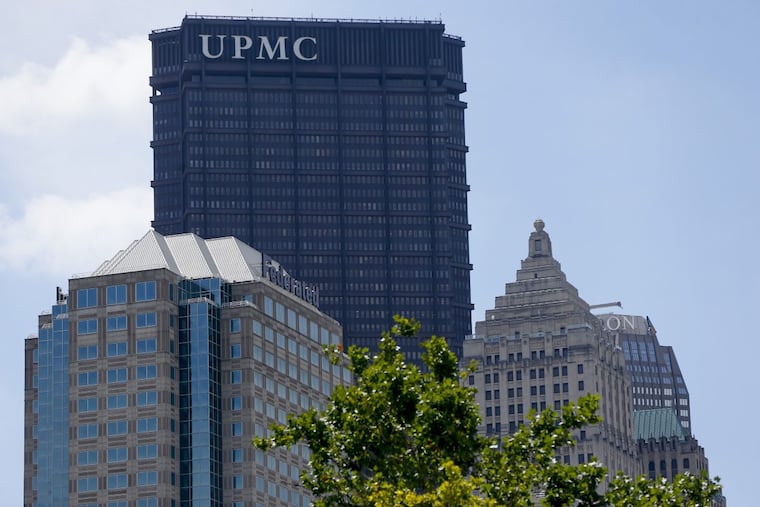Can we heal rural health? All eyes are on Pennsylvania’s bold experiment | Opinion
Typically, hospitals receive payment for each health care service they provide. With the Rural Health Model, hospitals get paid based on annual budgets. With their financial footings more predictable, hospitals can focus on keeping people healthy.

Rural communities and their hospitals are struggling.
In terms of health and well-being, rural Pennsylvania and urban Philadelphia have much in common, including high rates of child poverty and mortality, food insecurity, and chronic disease.
In terms of the health care needed to address these issues, rural hospitals face unique challenges. These include sustaining a wide array of services for smaller numbers of patients due to sparsely populated geographies. About half of Pennsylvania’s rural hospitals operate at a loss and are at risk for closure.
Respected research organizations have reported on this problem nationwide. Since 2010, 104 U.S. rural hospitals have closed, two of them in Pennsylvania.
Pennsylvania’s bold experiment
In partnership with the Center for Medicare & Medicaid Innovation, the Pennsylvania Department of Health’s new Rural Health Model flips the script on hospital care. In place of hospitals’ traditional focus — treating patients when they are sick or injured — the new model also aims to reward hospitals for keeping patients healthy and out of the hospital altogether.
To accomplish these goals, the model changes the way hospitals are paid.
Typically, hospitals receive payment for each health-care service they provide. With the Rural Health Model, hospitals get paid based on annual budgets, which provides more consistent cash flow. These budgets define the financial resources hospitals will have during the year — independent of how many patients are hospitalized or come to emergency rooms. Insurers (commercial and Medicare) and hospitals work together to establish budgets based on the payments hospitals typically received in the past.
With their financial footings a bit more predictable, hospitals can redirect resources and invest in services and partnerships to improve community health. Hospitals are encouraged to focus on keeping people healthy.
This new payment approach not only provides a measure of stability for hospitals, but also for rural communities and jobs.
In metropolitan areas, with a pick of health-care systems and services, it may be hard to imagine how important a hospital is to its rural community. In emergencies, that hospital may be the only source of care for 20 miles or more.
Virtuous cycle of better health and less spending
Hospitalizations in rural Pennsylvania, across the state, and nationwide are going down.
Hospitals and health systems are shifting care to outpatient and home settings whenever safe and appropriate. Doctors, nurses, and health educators are working with patients, encouraging them to seek preventive care, and improve health habits. The goal is to foster better quality of life and avoid intensive and costly inpatient care.
The Rural Health Model gives hospitals predictable finances and, potentially, additional flexibility with which to foster this move to better health and lower spending.
Now, instead of focusing on expanding services just for the sake of growing market share under the traditional fee-for-service model, hospitals can focus on providing the services most needed by the community. This right-sizing frees up resources to focus on the services needed to address an area’s biggest health challenges (diabetes, for example) and to kick start the virtuous cycle of better health and less need for hospital care.
Five Pennsylvania hospitals have signed up to test this new payment strategy. (Five insurers have also joined the pilot.) The hospitals have defined strategies for how they will improve the overall health of their communities. Common strategies include better care coordination for patients with chronic disease and better geriatric care for older adults, with the goal of reducing expensive emergency room visits.
Role of the Rural Health Redesign Center
The pressing need to help rural communities become healthier, and the potential for this model, has attracted interest from scores of state and federal government agencies and health policy organizations. They really want to make this model work, and effective collaboration is key.
Creating the Rural Health Redesign Center would establish the hub to bring these resources together, to help with the planning and analysis needed to identify successful strategies and replicate them. Five hospitals are using the model now, and we have high interest from up to 25 additional hospitals in joining them over the next two years. Learning from one another about what works and what doesn’t will speed progress.
State legislation is needed to set up the Rural Health Redesign Center. Senate Bill 314, sponsored by Sen. Lisa Baker (R., Luzerne), and House Bill 248, sponsored by Rep. Tina Pickett (R., Bradford), both have bipartisan support.
A model for the nation?
Governments, health departments, and hospitals across the nation are watching Pennsylvania’s experiment. Since starting work on this model several years ago, we’ve heard from over a dozen states, all asking: “Is it working?”
We invite you to pay close attention as well and to learn more about how five hospitals and insurers are working together, exploring a new and better way to care for their communities. Pennsylvania’s Rural Health Model could help to usher in a new era of health care.
Rachel Levine, M.D. is Pennsylvania Secretary of Health. Andy Carter is president and CEO of the Hospital and Healthsystem Association of Pennsylvania.